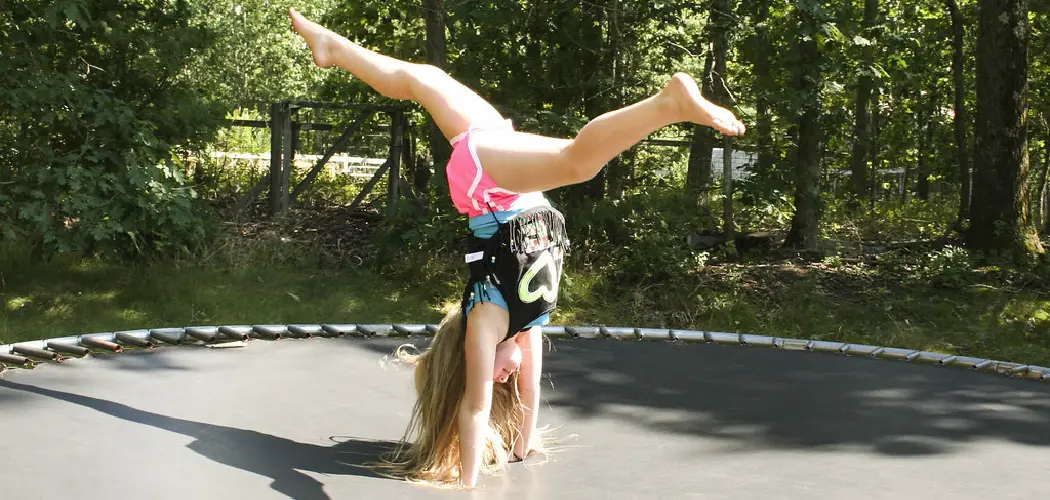Having a level trampoline is an important part of having safe and fun trampoline time. A trampoline that isn’t properly leveled can cause children to bounce off the sides or even experience injuries if they become unbalanced during a jump. To avoid any accidents, it’s important to know to level a trampoline and keep it in good condition.
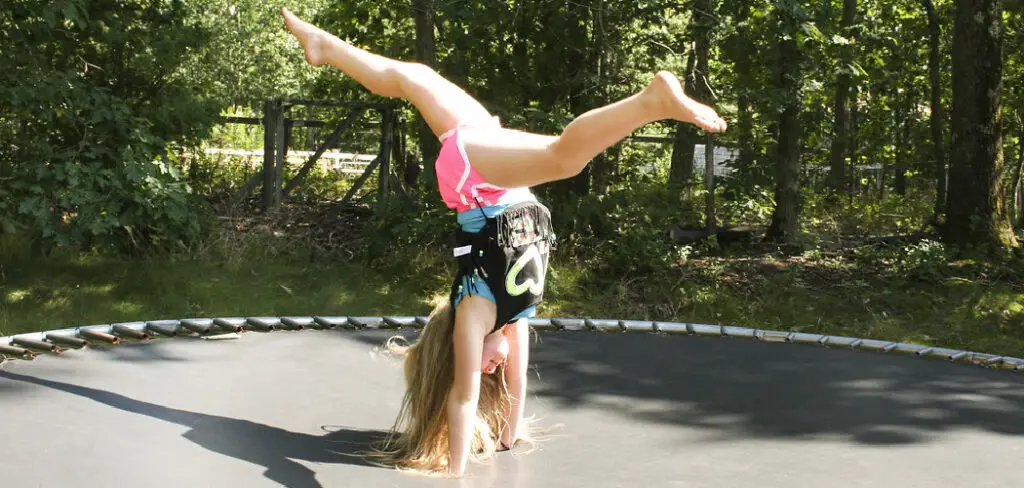
One of the main advantages to learning of levelling a trampoline is that it offers an opportunity for a family or group of friends to learn and practice safety measures while having fun at the same time. With a leveled trampoline, everyone can use it safely and without worry. You can find step-by-step instructions on how to level a trampoline in this blog article.
Step-by-step Instructions for How to Level a Trampoline
Step 1: Inspect the Area
Check the area where your trampoline will be located. Make sure that there are no objects in the vicinity that could damage your trampoline, such as sharp rocks or tree stumps. Also make sure that the ground is even and level so that you can easily set up your trampoline.
Step 2: Lay Out Your Trampoline
Lay out your trampoline on the ground and check to make sure that the legs are all evenly spaced. This will help ensure that your trampoline is level when you set it up. Secure the anchor points of your trampoline by either burying them in the ground or tying them to a nearby fence or tree. Make sure that the anchor points are securely fastened so that your trampoline will not come loose while in use.
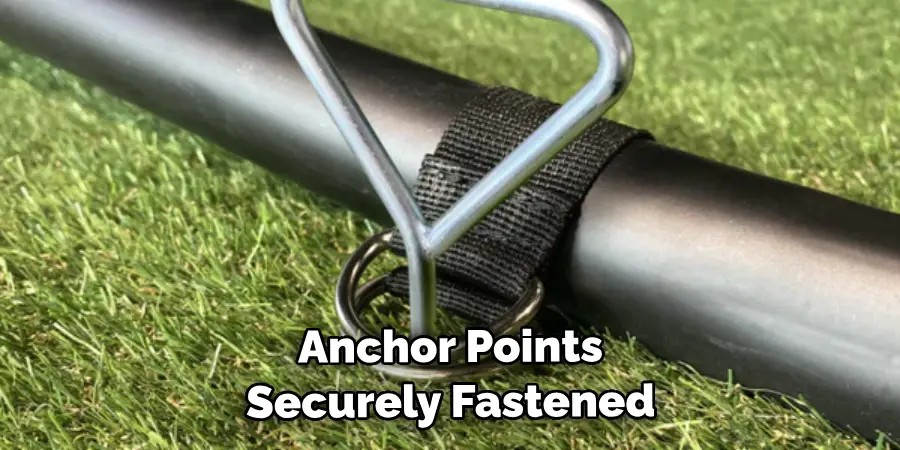
Step 3: Check for Unevenness
Check for any unevenness in the base of your trampoline by using a level tool. If there is an imbalance, adjust the legs accordingly until the base is even. Once you have adjusted the legs to make sure that your trampoline is level, secure each leg with a reinforcement plate or stake. This will help ensure that your trampoline remains level even when in use.
Step 4: Check for Unevenness Again
Once you have secured the legs, check for any unevenness in your trampoline. If there is an imbalance, start from step 4 and adjust the legs accordingly until you have achieved a level surface. You can add sand or gravel to the base of your trampoline to help keep it level and stable when in use. This will help to prevent any sinking or shifting of the trampoline while in use.
Step 5: Check for Unevenness Again
Once you have added sand or gravel, check for any unevenness in your trampoline with a leveler tool. If there is an imbalance, start from step 4 and adjust the legs accordingly until you have achieved a level surface.
Secure the enclosure netting to the trampoline by either burying it in the ground or tying it to a nearby tree or fence.
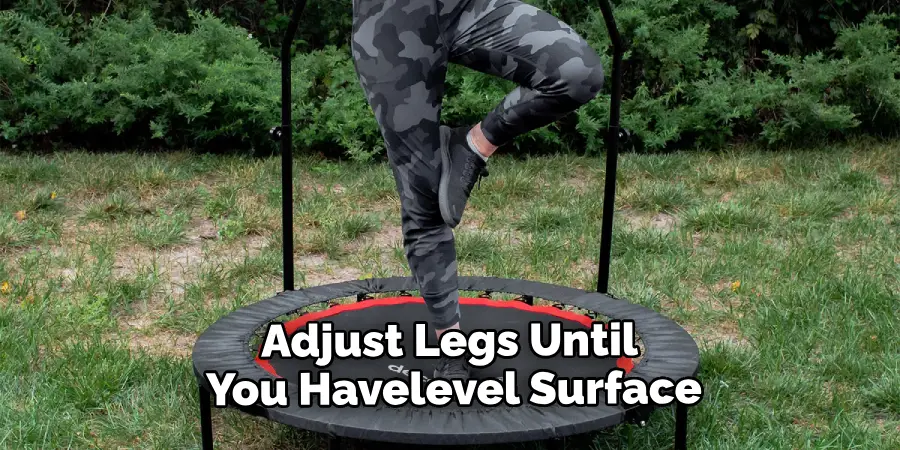
Make sure that all of the connection points between the netting and trampoline are securely fastened so that your trampoline will remain stable while in use.
Step 6: Check for Unevenness Once More
Once you have finished setting up your trampoline, check the level of your trampoline one more time with a level tool. If there is an imbalance, adjust the legs accordingly until you have achieved a level surface. Make sure that all anchor points, legs and netting are securely fastened so that your trampoline will remain stable while in use.
Safety Precautions for How to Level a Trampoline
- Make sure the trampoline is placed in an open area, away from any objects that could interfere with safety (e.g. fences, trees, etc.)
- Assess the surface where the trampoline will be installed; make sure it is flat and level to avoid accidents due to uneven ground or slopes
- Before jumping on the trampoline, make sure all the parts are secure and in place. Check for any loose bolts or nuts that might cause harm to those using it.
- Test if the trampoline is stable by applying pressure while jumping on it; adjusting leg length if necessary to make sure it’s sturdy.
- Make sure you always use safety netting and padding to reduce the risk of injuries or falling off the trampoline.
- Always have a spotter, preferably an adult, present when someone is jumping on the trampoline to help prevent accidents from happening.
- Make sure you follow all safety guidelines provided by the manufacturer and check periodically for any wear and tear of parts that need to be replaced.

It is important to remember that trampolines come with inherent risks; however, it’s possible to minimize those risks by taking the proper safety precautions.
Importance of Levelheaded a Trampoline
- Ensuring that the trampoline is properly leveled can help maximize its performance as well as make it safer to use.
- It helps with stability, reducing the risk of tipping over or shifting while in use.
- Uneven ground or slopes can cause extra stress and strain on parts of the trampoline such as legs and frame. This could lead to a collapse or other serious accidents.
- It can help provide better bounce performance as it ensures that the trampoline is set up perfectly in its frame. This will provide a more enjoyable experience for those using it.
- It also helps reduce noise while jumping on the trampoline by eliminating any vibrations due to uneven ground underneath it.
- Properly leveling the trampoline also makes it easier to set up and take down.
- It can help improve stability against strong winds or other external forces.
- Finally, levelheadedness is a key factor in maintaining the longevity of the trampoline and keeping it in good condition for longer periods of time.
Taking the time to properly level a trampoline can greatly improve its performance and safety. By following the instructions in this article, you’ll be able to safely and securely level your trampoline with ease.
Maintenance Tips for Levelheading a Trampoline
- Regularly check all hardware on the trampoline (nuts, bolts, springs, frame) to make sure that it is secure and in good condition.
- Inspect the surface around the trampoline for any uneven spots or debris that could cause an issue when leveling.
- Reassess the frame of the trampoline to make sure it has not shifted since last time it was leveled; if so, adjust accordingly.
- When setting up a new trampoline, make sure the ground is completely level before installing it.
- If the trampoline has been moved or relocated to a new area since last time it was set up, be sure to check that it is level again.
- Check all legs and adjust their length as needed for perfect balance and stability on uneven surfaces.
- Make sure the trampoline is set up in an open, safe area.
- Lastly, always follow the manufacturer’s instructions and recommendations when it comes to safety and maintenance of your trampoline.
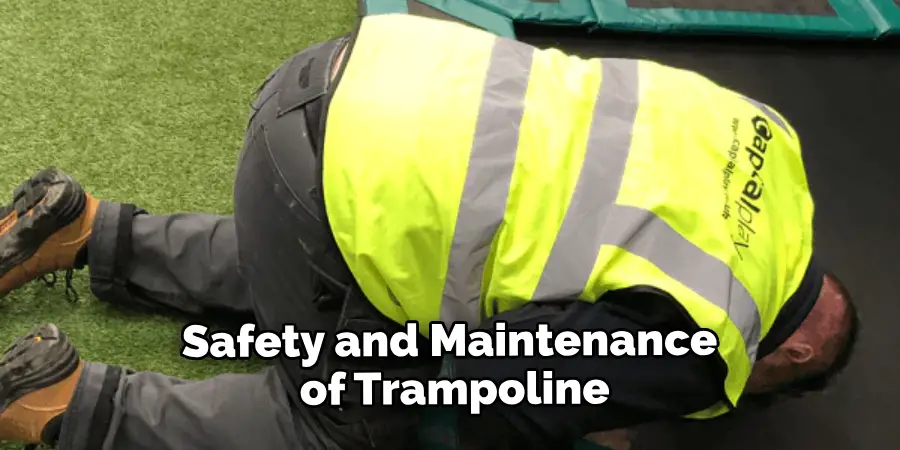
By following the necessary steps for properly leveling a trampoline, you’ll be able to ensure its safety and longevity for many years of enjoyment.
Significance of Taking Careful Measurement
- When it comes to levelling a trampoline, careful measurement is key.
- Having an exact and precise angle for the trampoline can help ensure its stability and prevent accidents from occurring.
- Taking measurements also allows you to make sure that all parts of the trampoline are leveled evenly, which will maximize its performance and provide a more enjoyable experience.
- Making sure that all legs and supports have the same length can also help reduce any noise or vibrations from uneven surfaces below it.
- Taking accurate measurements prevents parts of the trampoline from coming loose due to incorrect angles or settings.
- Having exact measurements can also help speed up the installation and setup process.
- Lastly, having precise measurements ensures that the trampoline is level for optimal safety and enjoyment.
Taking accurate measurements is essential when it comes to leveling a trampoline properly, so make sure to take your time and get it right.
What Are the Common Mistakes People Make When Trying to Level a Trampoline?
One of the most common mistakes people make when trying to level a trampoline is not taking into account the terrain in which it will be placed. It’s important to remember that positioning a trampoline on even ground isn’t enough; you also need to take into account other factors like slopes or dips in the ground, which can cause the trampoline to become unstable.
Other mistakes include not taking accurate measurements, not double-checking for any loose nuts or bolts, and forgetting to add padding or safety netting.
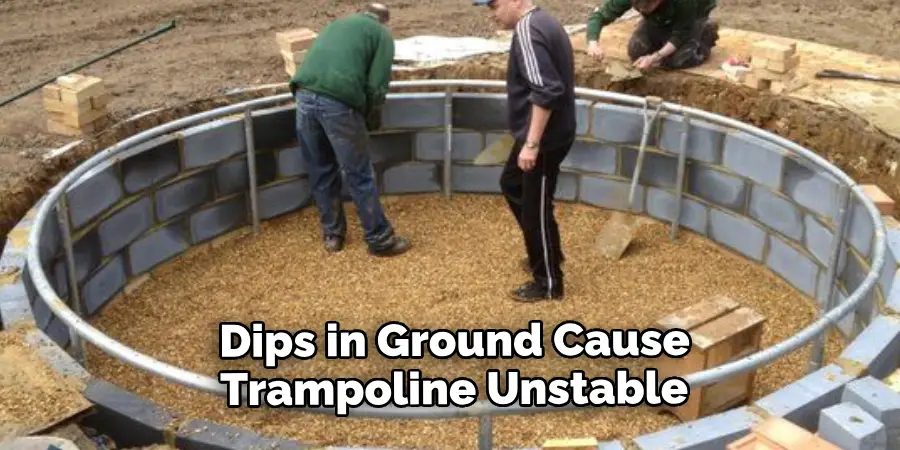
Additionally, people often forget to check that all legs are of the same length and securely fastened before using the trampoline; this could lead to an unbalanced setup which can be dangerous. Lastly, it’s important to regularly check for any wear and tear of parts that need to be replaced. Taking the time to avoid these common mistakes will ensure your trampoline is level and ready for safe fun.
What Type of Damage Can Occur if the Trampoline is Not Leveled Properly?
When a trampoline is not properly leveled, the movements of the springs and frame can be distorted. This can cause the springs to become loose or too tight, thereby affecting the bounce and balance of the trampoline. The frame could bend or break if not correctly set up on a level ground. It’s also possible for people to fall off the trampoline if it’s not level, due to the lack of stability. Therefore, it’s very important to make sure that your trampoline is leveled before you use it.
One of the best things you can do to ensure that your trampoline is level is to place a spirit level across the surface. If there are any variations in height between different parts of the trampoline, you can adjust the legs to level it out. You’ll also want to check for any dips or bumps in the ground that could cause your trampoline to be off-balance. Finally, make sure that all of the legs are firmly planted into the ground and that there is no debris such as leaves or twigs blocking them.
Do You Need to Check the Manufacturer’s Instructions Before Leveling Your Trampoline?
When it comes to levelling a trampoline, you must first check the manufacturer’s instructions. Some trampolines need special tools to properly level them out – even after assembly – and it’s important that you adhere to these instructions for safety reasons.
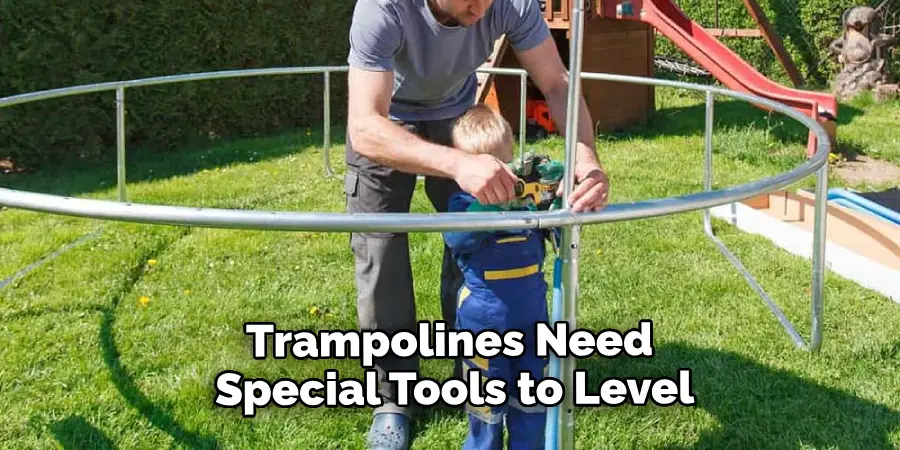
The most common type of tool used is a spirit level, which helps ensure that your trampoline has a level platform. You’ll also need to pay attention to the size of the trampoline and whether it is round or rectangular, as this may affect how you go about leveling it. Additionally, make sure that all the screws are securely tightened before proceeding with any leveling process. Finally, if your trampoline comes with an adjustable frame or base, you can make use of this to level your trampoline.
Simply adjust the frame or base until the spirit level shows that it is level. Be sure not to over-tighten any screws as this may damage the structure of your trampoline.
Conclusion
In conclusion, leveling a trampoline is an important and necessary step for the safety of the users. It ensures that your trampoline remains stable and safe when in use, and prevents any potential accidents from occurring. This can be done by using levelers or bolting the frame into the ground. Doing this will help to ensure that you get the most out of your trampoline and make it last for many years to come.
With that being said, how to level your trampoline is a quick and easy process that can save you time and money in the long run. Make sure to take the necessary steps to keep your trampoline safe for everyone who uses it. This means checking the frame regularly, making adjustments when needed, and using levelers to keep the trampoline in place. I hope this article has been beneficial for learning how to level a trampoline. Make Sure the precautionary measures are followed chronologically.
About
Outdoor Fixes is a distinguished figure in the world of Diy design, with a decade of expertise creating innovative and sustainable Diy solutions.
His professional focus lies in merging traditional craftsmanship with modern manufacturing techniques,
fostering designs that are both practical and environmentally conscious. As the author of diy,
outdoorfixes delves into the art and science of outdoorfixes-making, inspiring artisans and industry professionals alike.
Education RMIT University
(Melbourne, Australia) Associate Degree in Design (Outdoor Fixes) Focus on sustainable design, industry-driven projects,
and practical craftsmanship. Gained hands-on experience with traditional and digital manufacturing tools, such as CAD and CNC software.
Nottingham Trent University
(United Kingdom) Bachelor’s in outdoorfixes.com and Product Design (Honors) Specialized in product design with a focus on blending creativity with production
techniques. Participated in industry projects, working with companies like John Lewis and Vitsoe to gain real-world insights.
Publications and Impact
In diy, Outdoor Fixes his insights on indoor design processes, materials, and strategies for efficient production.
His writing bridges the gap between artisan knowledge and modern industry needs, making it a must-read for both budding designers and seasoned professionals.

